Suchendra Bhandarkar
Eye Tracking for Everyone
Jun 18, 2016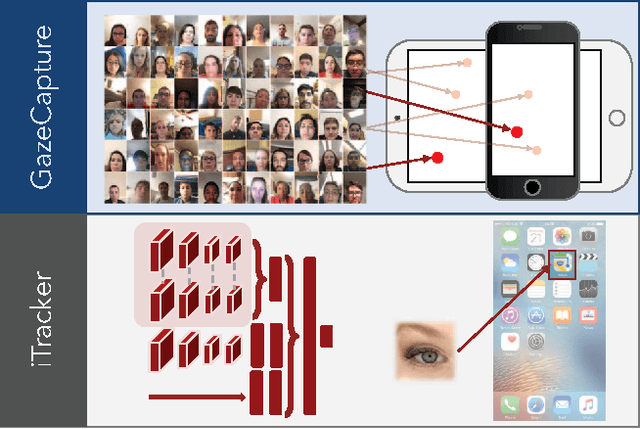
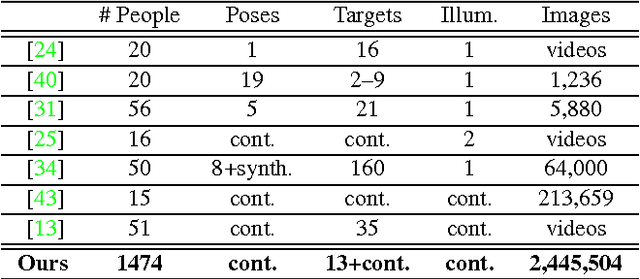

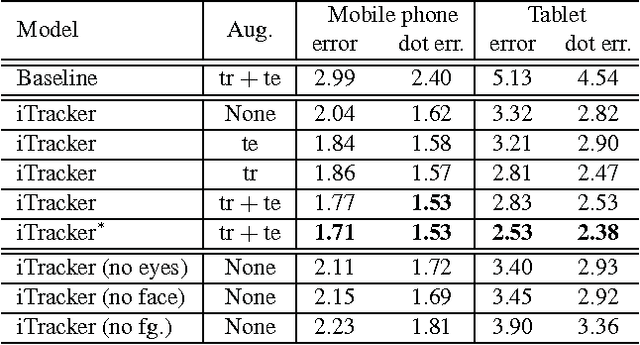
Abstract:From scientific research to commercial applications, eye tracking is an important tool across many domains. Despite its range of applications, eye tracking has yet to become a pervasive technology. We believe that we can put the power of eye tracking in everyone's palm by building eye tracking software that works on commodity hardware such as mobile phones and tablets, without the need for additional sensors or devices. We tackle this problem by introducing GazeCapture, the first large-scale dataset for eye tracking, containing data from over 1450 people consisting of almost 2.5M frames. Using GazeCapture, we train iTracker, a convolutional neural network for eye tracking, which achieves a significant reduction in error over previous approaches while running in real time (10-15fps) on a modern mobile device. Our model achieves a prediction error of 1.71cm and 2.53cm without calibration on mobile phones and tablets respectively. With calibration, this is reduced to 1.34cm and 2.12cm. Further, we demonstrate that the features learned by iTracker generalize well to other datasets, achieving state-of-the-art results. The code, data, and models are available at http://gazecapture.csail.mit.edu.
Automated Image Captioning for Rapid Prototyping and Resource Constrained Environments
Jun 04, 2016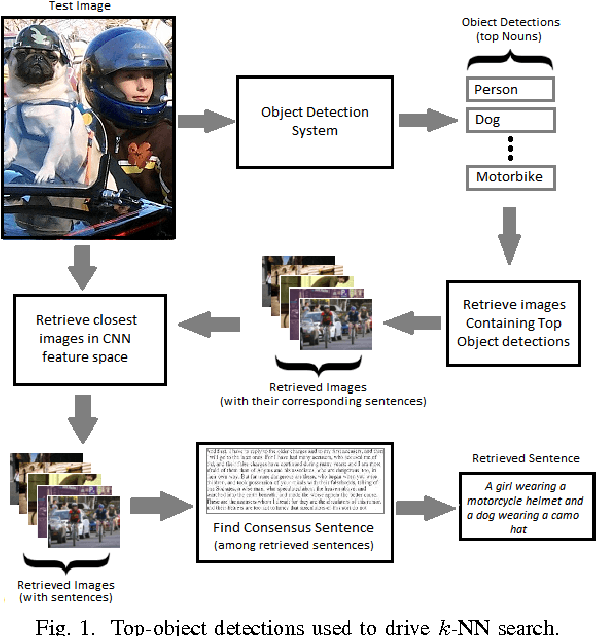
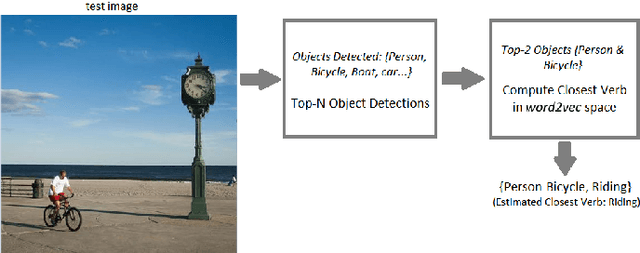
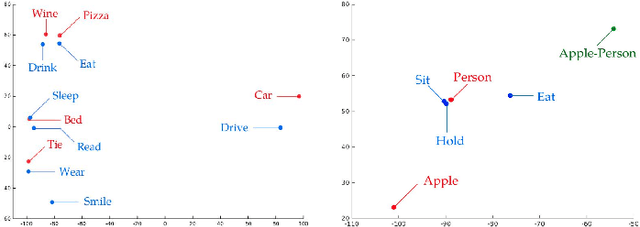
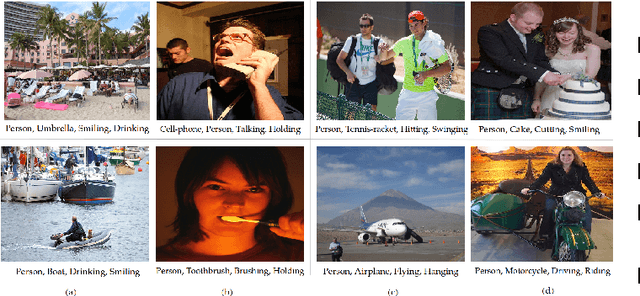
Abstract:Significant performance gains in deep learning coupled with the exponential growth of image and video data on the Internet have resulted in the recent emergence of automated image captioning systems. Ensuring scalability of automated image captioning systems with respect to the ever increasing volume of image and video data is a significant challenge. This paper provides a valuable insight in that the detection of a few significant (top) objects in an image allows one to extract other relevant information such as actions (verbs) in the image. We expect this insight to be useful in the design of scalable image captioning systems. We address two parameters by which the scalability of image captioning systems could be quantified, i.e., the traditional algorithmic time complexity which is important given the resource limitations of the user device and the system development time since the programmers' time is a critical resource constraint in many real-world scenarios. Additionally, we address the issue of how word embeddings could be used to infer the verb (action) from the nouns (objects) in a given image in a zero-shot manner. Our results show that it is possible to attain reasonably good performance on predicting actions and captioning images using our approaches with the added advantage of simplicity of implementation.
 Add to Chrome
Add to Chrome Add to Firefox
Add to Firefox Add to Edge
Add to Edge